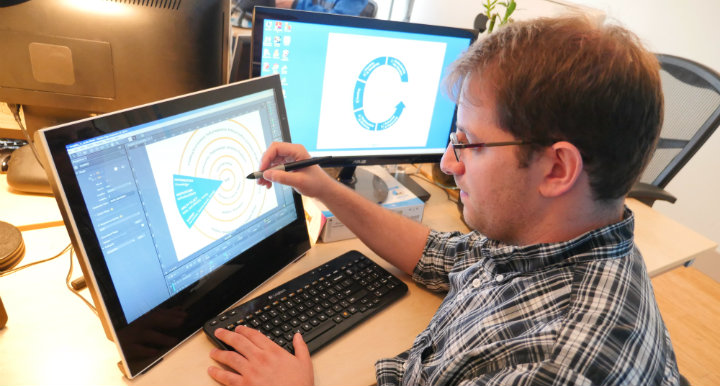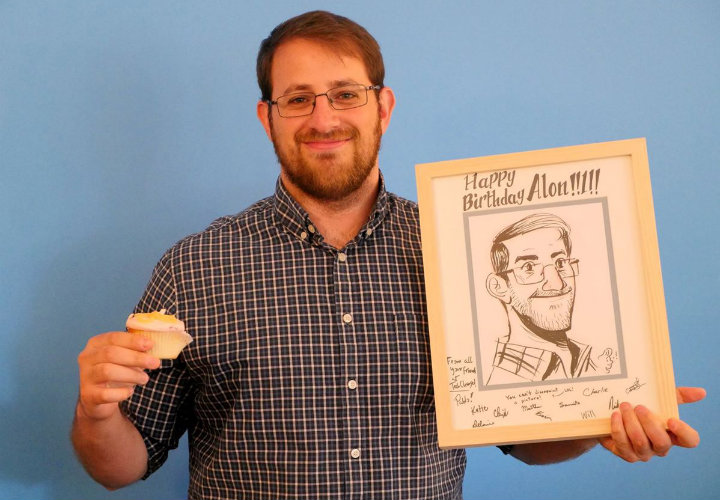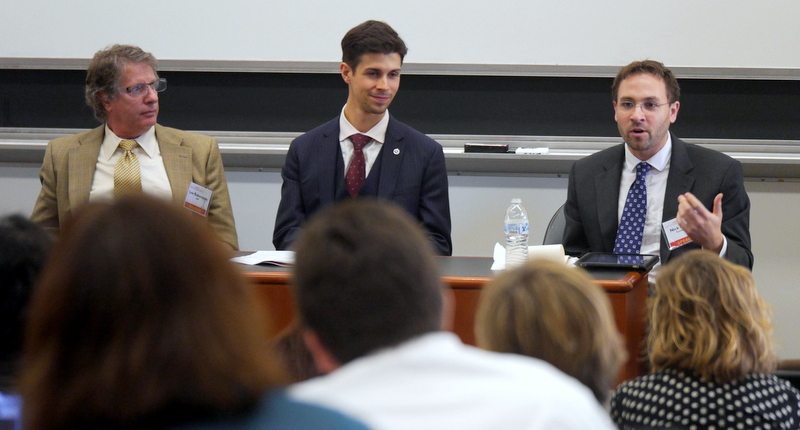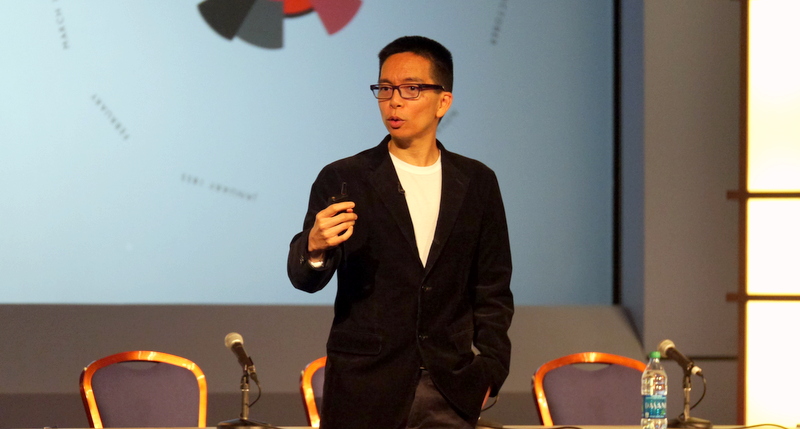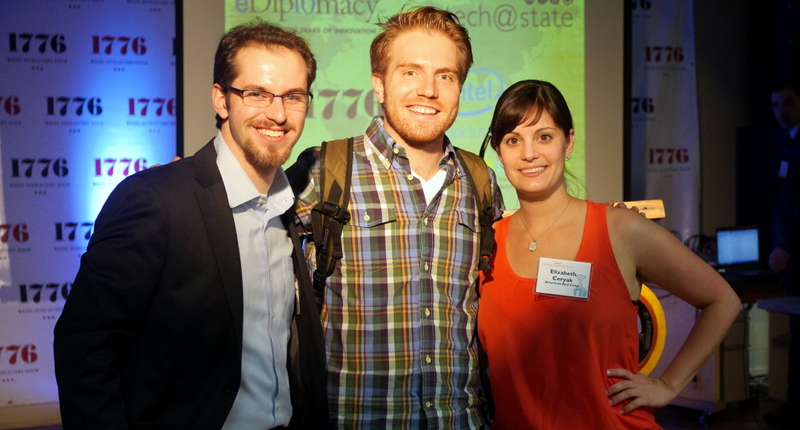At TechChange, we believe that online learning doesn’t have to be boring, which is why we have an in-house animation and graphic design studio. What is it like to be a production designer and animator working with international development organizations? Read on to learn about what it’s like to be on the TechChange Creative Team from Senior Production Designer, Pablo Leon.
Where are you from?
I was born in Los Angeles, California and grew up in Guatemala.
What did you do before working at TechChange?
I was a sign artist at a store, and also did a lot of freelance work with graphics and such.
What exactly do you do at TechChange?
As a senior production designer, I wear many hats in the creative process. I’m a production designer, where I set out to create the look and feel of our projects. I’m also an illustrator. In addition, I do some motion graphics animations.
TechChange ICT4D animation
How did you hear about TechChange?
I was in school at the time and decided that being a sign artist was just not for me. I wanted to do more with my skills. One day while I was browsing the web, I saw a post for a creative job at TechChange. I read up on the company, liked what I saw, went in for an interview, and the rest is history.
How did you get into animation?
I graduated from the Art Institute of Washington with a degree in media arts and animation. Animation, cartoons, and comics have always been a passion since I was young, and I didn’t see a reason to grow out of them.
TechChange CGAP animation
What is the most important lesson you’ve learned in doing graphics and animations for international development?
It is very important to be socially aware of what best conveys a message on screen. Translating certain topics to a visual medium can sometimes be difficult, especially when you’re not familiar with the subject or if it’s a very sensitive subject, such as religion.
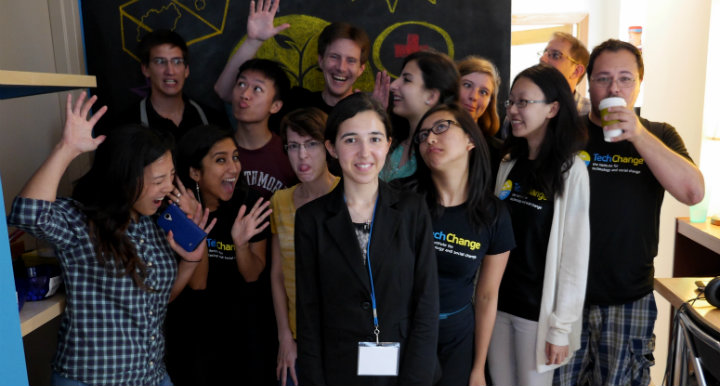 The TechChange Team with the 2014 TechGirls during the Job Shadow Day visit
The TechChange Team with the 2014 TechGirls during the Job Shadow Day visit
How do you keep up with the latest developments in animation/multimedia technology and trends?
The Internet is a good place to start but there are only a handful of websites out there for it, such as Animation Scoop, or the ever controversial Cartoon Brew. The animation community is not huge but we tend to talk and learn from each other a lot.
What do you love most about working at TechChange?
I have the most fun when I can take complex content, tear it apart, and put it together with a narrative to make it simple for everyone to understand. The second best thing would be the coffee here. And arguing about geek culture wearing a Mexican wrestling mask is a close third on my list.
Between Two Nerds: Episode 1
What is your favorite TechChange moment so far?
Our move to a new office on U Street from Capitol Hill, and being able to hang up my Jurassic Park’s Jeff Goldblum print is quite a highlight.
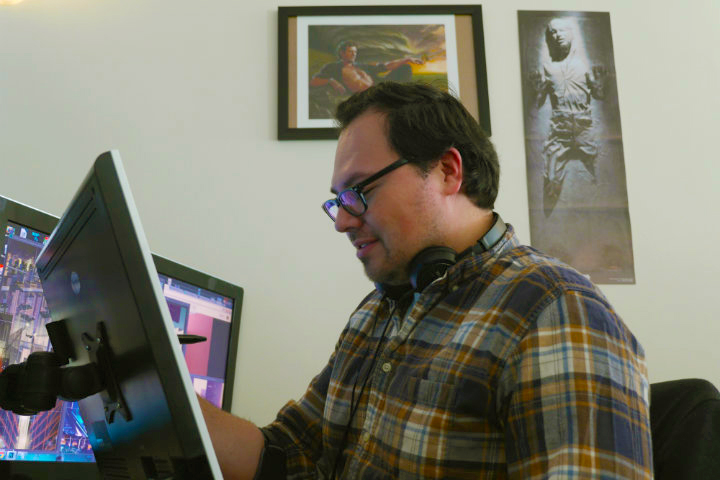 Pablo works at his desk under his Jeff Goldblum photo
Pablo works at his desk under his Jeff Goldblum photo
What do you do when you’re not at TechChange?
Basically I just draw and paint on my free time. I love working on the projects I get for TechChange, but working on personal projects is equally important as a stress reliever. I’m not a fan of resting, so workaholics unite!
If you had to direct someone to the best place to eat in D.C. where would it be?
Burger Tap & Shake has the best burgers in town. You cannot question me.

